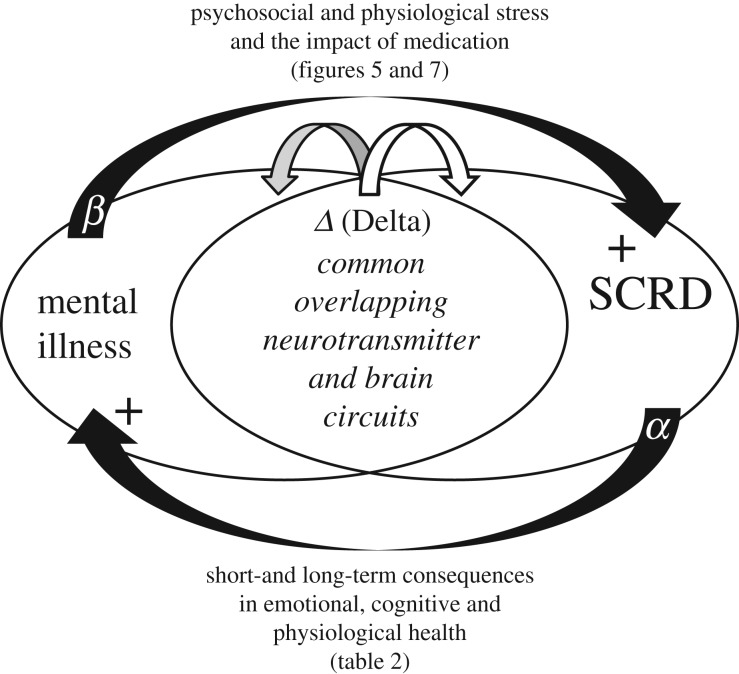Figure 8.
Diagram illustrating the possible relationship between mental illness and sleep and circadian rhythm disruption (SCRD). The diagram illustrates the hypothesis that mental illness and SCRD share common and overlapping pathways within the brain. As a result, an altered pattern of neurotransmitter release (shown as Δ Delta) that predispose an individual to mental illness will result in a parallel impact upon the sleep/circadian systems. Disruption of sleep (shown as α) will, likewise, impact upon multiple aspects of brain function with both short- and long-term consequences in emotional, cognitive and physiological health (figures 5 and 7; and table 2), and in the young may even have developmental consequences. The consequences of mental illness (shown as β), giving rise to psychosocial (e.g. social isolation) and physiological stress (figures 5 and 7), along with the impact of medication, will impinge upon the sleep and circadian systems. A positive feedback loop could rapidly be established whereby a small change in neurotransmitter release could be amplified via positive feedback loops into more pronounced SCRD and poorer mental health.

